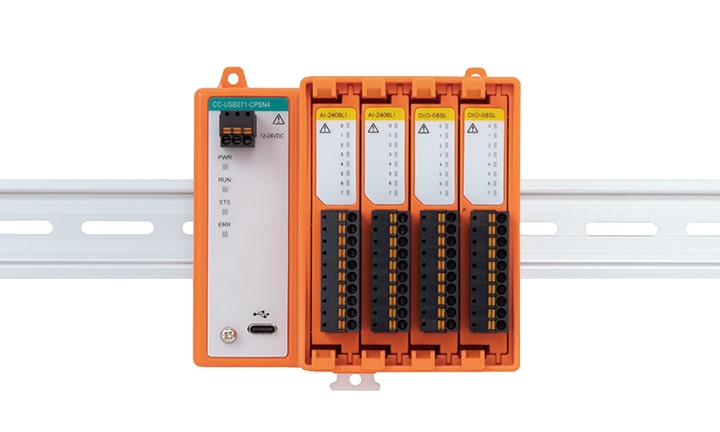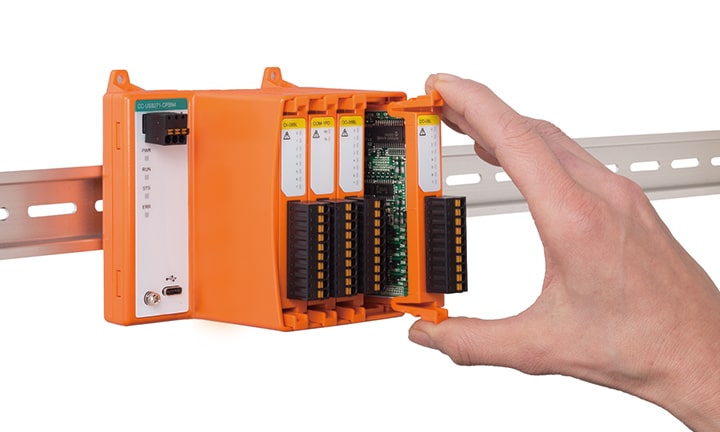New Product Release: USB-Connected CC-USB271-CPSN4 Modular I/O Unit for Increased Freedom in Combining Necessary I/O Functions
Africa、Asia、Europe、Japan、Middle East、North America、Oceania、Latin America
Contec has developed a USB-connected I/O unit that allows for greater freedom in combining I/O modules. Orders for the CC-USB271-CPSN4 modular USB I/O unit—the newest product in the PC-HELPER Series of PC measurement control components—began on February 25, 2021.

CC-USB271-CPSN4 (front)

Easy tool-free connection and disconnection of I/O modules
This new compact, modular USB I/O unit can be connected directly to the USB port on a Windows PC using the included USB cable (USB 3.2 Gen 1 Type-A to Type-C). Take advantage of up to four versatile, low-cost CONPROSYS™ nano Series Ethernet-based remote I/O modules (on sale now) for signal input and output.
For single endpoints with different operating circuits and sensors, and a small number of total inputs and outputs, I/O modules with the appropriate number of signal inputs and outputs can be combined to form an I/O unit, reducing costs compared to conventional USB I/O units.
This new product can be powered directly via the USB cable from a Windows PC. The safety-focused design includes a flashing LED to notify users if the power consumption exceeds the available USB bus power supply.
Main Features
- Flexible modular design for effective configurations
Use up to four versatile, low-cost CONPROSYS™ nano Series I/O modules (including digital, analog, relay, and counter modules). I/O modules can be easily removed without the need for tools.
- USB bus power operation with no need for an AC adapter
The USB Type-C port on the product accepts up to 15 W of high-capacity USB power.
Using the included USB cable to connect the product to a USB 2.0 Type-A port on a Windows PC will provide 2.5 W (5 V, 500 mA) of power, or 4.5 W when connected to a USB 3.0 Type-A port. A PC with a USB Type-C port will provide 15 W of power when connected using a commercially available USB cable (Type-C to Type-C).
- Insufficient USB power detection function for preventing malfunctions
If the unit’s power consumption exceeds the power supplied by the connected USB port, the ERR LED will flash to notify users, and the insufficient USB power detection function will stop the unit from starting up. In addition to preventing malfunction due to an insufficient USB power supply during operation, the unit also prevents overcurrent by limiting the power drawn from the connected USB port according to the port specifications.
- Compact design
The compact design (110 [W] × 74.8 [D] × 95 [H] mm) enables installation in a wide variety of locations, including easy one-touch installation on DIN rails.
- Supports Windows driver software
It is possible to create applications that use Windows driver software provided in API function (DLL) formats, and a diagnostic program that can easily check software and hardware operations is also provided. The popular Python programming language is also supported.
Related Link
-
*
The information included is current as of the publication date. The sales conditions, price, and specifications may be changed without notice.
-
*
Company names and product names are generally trademarks or registered trademarks of each company.
New Announcement
-
2025/07/04
-
2025/07/02
-
2025/06/26
View all